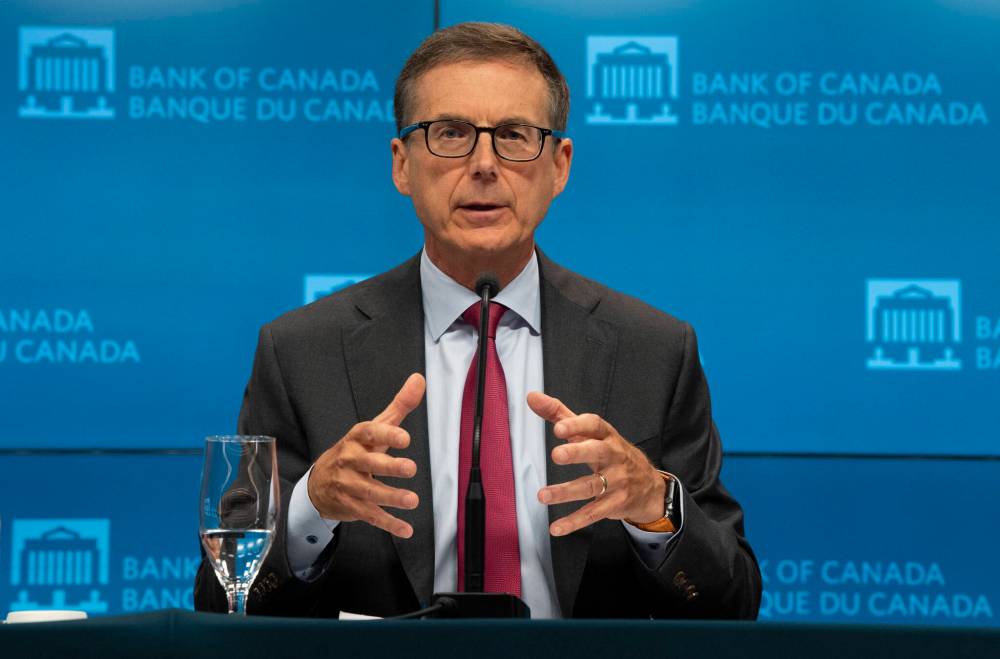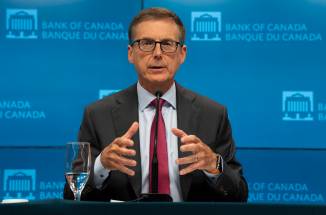Full percentage point hike surprising, but necessary
Read this article for free:
or
Already have an account? Log in here »
To continue reading, please subscribe:
Monthly Digital Subscription
$0 for the first 4 weeks*
- Enjoy unlimited reading on winnipegfreepress.com
- Read the E-Edition, our digital replica newspaper
- Access News Break, our award-winning app
- Play interactive puzzles
*No charge for 4 weeks then price increases to the regular rate of $19.00 plus GST every four weeks. Offer available to new and qualified returning subscribers only. Cancel any time.
Monthly Digital Subscription
$4.75/week*
- Enjoy unlimited reading on winnipegfreepress.com
- Read the E-Edition, our digital replica newspaper
- Access News Break, our award-winning app
- Play interactive puzzles
*Billed as $19 plus GST every four weeks. Cancel any time.
To continue reading, please subscribe:
Add Free Press access to your Brandon Sun subscription for only an additional
$1 for the first 4 weeks*
*Your next subscription payment will increase by $1.00 and you will be charged $16.99 plus GST for four weeks. After four weeks, your payment will increase to $23.99 plus GST every four weeks.
Read unlimited articles for free today:
or
Already have an account? Log in here »
Hey there, time traveller!
This article was published 13/07/2022 (1245 days ago), so information in it may no longer be current.
Mild-mannered Tiff Macklem, governor of the Bank of Canada, took a mighty swing with his heaviest club this week when he raised the bank’s policy interest rate by a whole percentage point, to 2.5 per cent from 1.5 per cent.
That might seem at first glance to be a small gesture, but in the cautious, glacier-slow world of central banking, it was more like an economic earthquake.
By way of comparison, U.S. Federal Reserve chairman Jerome Powell almost apologized on June 15 for his extreme step of raising the U.S. official interest rate by 0.75 points. That was an unusually large move, he said, and he did not expect to do that often.

Central banks typically move their interest rate up or down a quarter of a point to induce commercial banks to shift their lending policies accordingly.
In that context, the Bank of Canada’s move on Wednesday was an astonishing and dramatic signal to the country’s chartered banks, and beyond them to Canadian businesses and consumers. It showed the bank finds inflation pressure building rapidly and wants to take drastic steps now rather than awaiting developments.
Economic commentators had been wondering if the bank would take the extreme step of a 0.75-point rate increase. No one was expecting the increase of a whole percentage point.
The bank explained that the war in Ukraine and recurring difficulty in obtaining manufactured goods from Asia are still driving up prices and will continue to do so. Moreover, the range of consumer prices affected by inflation has widened to such a point that more than half the components of Canada’s Consumer Price Index are now showing year-over-year increases of more than five per cent.
When the bank asked businesses and consumers what price and wage changes they expect in the coming months, the answers they heard showed Canadians have already braced themselves for steadily rising inflation. Once that expectation takes hold, it can become a self-fulfilling prophecy.
Canada has passed this way before. After price and wage controls failed to curtail inflation in the 1970s, the Bank of Canada drove interest rates well above 10 per cent in the early 1980s. The resulting recession, connected also with disruption of crude oil supplies from the Middle East, finally squeezed the inflation out of Canadian wage and price dynamics, at the cost of high unemployment and lost output.

This time the bank is trying to move against inflation in its early stages rather than waiting for Canadians to take it for granted that all prices and wages will be 10 per cent higher next year.
Mr. Macklem and his colleagues are also reasoning that employment is strong and demand for goods and services is strong. Canadian businesses, in aggregate, can afford to pay more for their borrowed funds, and Canadian individual lenders can tolerate a sharp increase in their loan payments.
Canada’s unemployment rate is lower than ever. Businesses cannot fill all their job vacancies. Businesses are able to pass on rising input costs by raising their prices. All this suggests a stiff rise in borrowing costs can be endured.
Some businesses will be hurt, and some consumers will be forced to sell houses they can no longer afford. The Bank of Canada, however, cannot set an interest rate that serves every borrower and every region equally well. It has to set a single rate structure for the whole banking system, and leave individual borrowers to find their own solutions.









